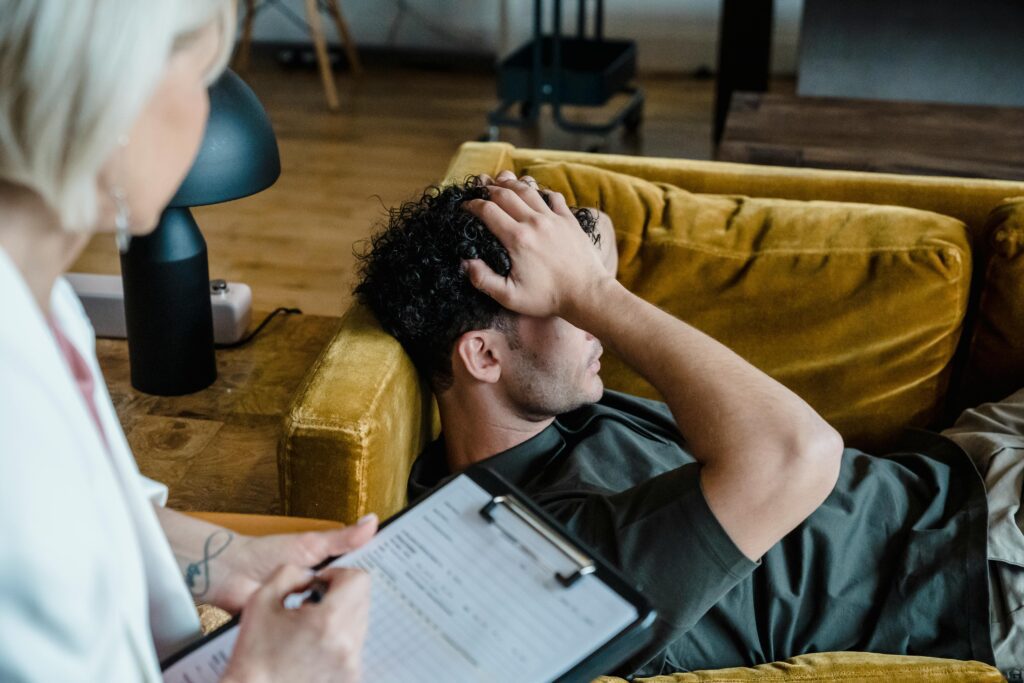New Behavioral Health Treatment Facility Now Open!
Recovering from drug addiction is a challenging process that demands dedication, self-control, and a reliable support system. One of the greatest obstacles individuals encounter during this journey is peer pressure. Whether it stems from old acquaintances, social events, or internal triggers, the urge to return to substance use can be overwhelming.
Mastering the ability to say no is crucial for sustaining long-term sobriety. It’s not just about declining drugs—it’s about making an intentional decision to prioritize health, personal growth, and well-being. In this article, we’ll delve into why saying no plays such a vital role in recovery, explore the different forms of peer pressure, and offer practical strategies to help you stay strong on your path to sobriety.

In the context of addiction recovery, saying no is more than simple refusal—it’s an affirmation of self-respect, a commitment to a healthier lifestyle, and a powerful step toward regaining control. Many people relapse not because they intend to, but because they find it difficult to resist external pressure from their environment or social circle. Without the confidence to say no firmly, it becomes much harder to stick to recovery goals.
Setting and maintaining healthy boundaries is another key aspect of saying no. Strong boundaries help protect individuals from toxic influences and risky situations, creating a safer, more supportive environment for recovery.
Additionally, confidently saying no fosters self-esteem and independence. It reinforces the decision to live sober, strengthens resilience against external pressures, and nurtures a growing sense of personal integrity and empowerment.
Peer pressure can be a major hurdle in sobriety and manifests in several ways. Being able to recognize it early is essential for effectively resisting it.
Understanding these different forms of peer pressure empowers individuals to develop strategies that protect their sobriety.
Your tone and body language matter. A hesitant no might invite further persuasion. A firm, clear response like “No, I’m committed to my recovery” can be far more effective.
Having a few ready-made phrases can ease anxiety and make it easier to decline in the moment. Examples include:
Practicing these beforehand can boost confidence when real-life situations arise.
Steer clear of environments or social groups that jeopardize your recovery. Surrounding yourself with people who respect and support your sobriety can make a huge difference.
If you attend a social gathering, consider bringing a sober friend or recovery mentor along. Having someone who understands your goals provides added support and accountability.
Equip yourself with healthy coping mechanisms to handle stress and temptation, such as:
These habits can help make refusing temptation feel natural and empowering.
Joining groups like Alcoholics Anonymous (AA) or Narcotics Anonymous (NA) can provide a steady source of encouragement. Sharing experiences with others who understand your journey can strengthen your resolve and sense of belonging.
In moments of temptation, remind yourself why you chose recovery. Whether for better health, stronger relationships, or peace of mind, revisiting your goals can renew your commitment to sobriety. Keeping a written list of these motivations and reviewing it regularly can serve as a powerful anchor.

Saying no is not simply about avoiding drugs—it’s about choosing a healthier, more fulfilling life. While peer pressure is a formidable challenge, recognizing its different forms and arming yourself with strategies can fortify your journey toward lasting recovery.
Each time you say no, you affirm your resilience, strength, and dedication to building a better future. With confidence, preparation, and the right support, staying committed to sobriety becomes increasingly attainable.
If you or a loved one needs support navigating peer pressure or maintaining sobriety, contact us anytime at (844) 916-4088 or info@keysbh.com, or visit us at 890 East Street Tewksbury, MA. 01876.
Detoxing from marijuana—also known as THC (tetrahydrocannabinol) detox—is the process of clearing cannabis from your system. Whether you’re preparing for a drug test, pursuing a sober lifestyle, or simply taking a break, understanding the detox process is essential.
This guide will walk you through the key aspects of marijuana detox: what happens in your body, how long detox may take, common symptoms, and tips for supporting your recovery journey.

Marijuana detox refers to the body’s natural method of eliminating THC, the primary psychoactive ingredient in cannabis. Unlike alcohol, which exits the body relatively quickly, THC binds to fat cells and can remain in your system for extended periods—particularly in regular or heavy users.
As you detox, THC metabolites (mainly THC-COOH) are broken down and expelled through urine, feces, and sweat. Although detox is rarely life-threatening, it can cause uncomfortable withdrawal symptoms as your body adapts to functioning without cannabis.
The amount of time THC remains detectable varies based on factors like frequency of use, metabolism, body fat percentage, and hydration.
Different drug tests—urine, blood, saliva, and hair follicle—have varying detection windows, with urine tests being the most common. Frequent users may test positive for up to 30 days. For a detailed overview, Healthline offers an excellent guide on marijuana detection times.
Withdrawal symptoms typically start within 24 to 72 hours after stopping use and peak within the first week. Some individuals may continue to experience symptoms for two weeks or longer.
Symptoms often include:
These symptoms stem from the brain adjusting to lower dopamine levels caused by the absence of THC. The severity generally correlates with the duration and intensity of cannabis use.
Detox usually follows three stages:
Each detox experience is unique, influenced by your biology and history with cannabis.
While no method can instantly remove THC, some strategies can aid your body’s natural detox:
Be cautious of detox products like teas and pills promising quick results—they're often ineffective and unregulated. For safe guidance, refer to Mayo Clinic’s advice on detox diets.
While most individuals can detox without medical intervention, some benefit from professional support—especially those with co-occurring mental health conditions. Medical detox programs offer:
Addiction treatment centers provide personalized care plans that can greatly enhance recovery outcomes.
Detox isn't just a physical process; it’s an emotional one too. Many experience heightened anxiety or depression, particularly if cannabis was used to self-medicate.
Therapeutic approaches like cognitive-behavioral therapy (CBT) can help manage emotional withdrawal symptoms by identifying triggers and teaching coping strategies. Support groups such as SMART Recovery and Marijuana Anonymous provide community and encouragement.
Creating positive new routines is vital for recovery. Focus on:
Mindfulness practices like meditation and journaling can also ease stress and stabilize emotions. Apps like Headspace and Calm offer accessible mindfulness resources.
Cravings are common during detox and can be triggered by stress, boredom, or social cues. Techniques to handle cravings include:
Over time, cravings will decrease as your brain adjusts to life without THC.
Relapse is relatively common, especially early on. However, a relapse doesn’t define failure—it’s an opportunity to strengthen your coping strategies. Analyzing triggers that led to relapse and reaching out for support can help reinforce your commitment to sobriety.
Resources like SAMHSA’s treatment locator can help you find professional support if needed.

If marijuana use is negatively impacting your life—relationships, career, or mental health—it may be time to seek professional help. Quitting cold turkey isn’t always effective, and detox can unearth underlying mental health issues.
Keys Behavioral Health offers:
We provide medical oversight, emotional support, and personalized recovery plans to help you succeed.
Contact us anytime at (844) 916-4088 or info@keysbh.com, or visit us at 890 East Street Tewksbury, MA. 01876.
Don't wait to reclaim your life. Begin your journey to recovery today.
Overcoming drug addiction is a significant achievement that demands perseverance, strength, and continuous effort. Yet, one of the most challenging phases of recovery begins after completing rehabilitation. Staying sober long-term often proves harder than the initial decision to seek help. Relapse is a common part of recovery, but it does not signify failure; rather, it highlights the need for adjustments in one's approach. By embracing effective coping strategies and committing to a healthy lifestyle, individuals can greatly minimize the risk of relapse.
If you or a loved one is navigating recovery, recognizing potential triggers and proactively working on relapse prevention are crucial. In this article, we’ll cover seven powerful strategies to help maintain sobriety and stay committed to lifelong recovery.

Recognizing and managing triggers is a cornerstone of relapse prevention. Triggers—such as certain people, places, emotions, or memories—can reignite the urge to use drugs. These vary from person to person but often include stress, emotional distress, peer pressure, and environments tied to previous substance use.
Creating a personal list of triggers and developing a plan to manage or avoid them is vital. For instance, distancing from old acquaintances associated with drug use or adopting stress-reduction techniques like meditation, exercise, or deep breathing can provide healthier outlets for coping.
Being aware of triggers isn’t about living in constant fear of relapse; it’s about making mindful, informed choices to protect your recovery journey.
Recovery thrives with support. Having people to lean on can dramatically influence your ability to maintain sobriety. Friends, family, mentors, and support groups can offer encouragement, accountability, and understanding during challenging moments.
Participating in recovery groups such as Alcoholics Anonymous (AA) or Narcotics Anonymous (NA) can be especially beneficial. These communities foster connections with others who share similar experiences, providing motivation and practical advice.
If your personal support network is limited, seeking help from professional counselors or therapists can be equally valuable in reinforcing your recovery.
Many individuals turn to substances as a way to cope with emotional pain, anxiety, or depression. Without healthier alternatives, these emotions can become overwhelming, increasing the risk of relapse. Building and practicing positive coping mechanisms is essential.
Some effective methods include:
Healthy coping skills provide vital tools for managing life’s inevitable challenges without turning back to substance use.
A well-organized routine can serve as a foundation for long-term sobriety. When your days are filled with purpose and structure, there’s less room for temptation and unhealthy habits.
An effective daily routine might include:
Keeping busy with positive activities nurtures a sense of accomplishment and helps maintain focus on recovery goals.
Relapse is typically a gradual process rather than a sudden event. Being able to recognize the early warning signs can prevent a full relapse.
The three stages of relapse include:
Spotting and addressing the emotional and mental stages early on—through support groups, therapy, or reaching out to a sponsor—can effectively stop the downward spiral before it leads to substance use.
The people you surround yourself with have a powerful impact on your recovery. Toxic relationships—those that involve manipulation, stress, or encouragement to use drugs—can threaten your sobriety.
Setting clear boundaries or ending harmful relationships is sometimes necessary for personal growth. Instead, invest time in nurturing relationships that support and inspire you to stay clean and sober.
If complete avoidance isn't possible, learning assertiveness and setting firm personal boundaries can safeguard your mental and emotional health.

Long-term recovery often requires continued professional guidance. At Keys Behavioral Health, we offer therapy, counseling, and outpatient programs designed to support sobriety at every stage.
Approaches such as cognitive-behavioral therapy (CBT) help reframe negative thinking patterns and provide practical strategies for managing cravings and stress. Additional options like group therapy, medication-assisted treatment (MAT), and holistic therapies can also aid in building a stable, fulfilling life.
Recovery is a lifelong journey—seeking help is a sign of strength, not weakness. Professional support can provide the tools and encouragement needed to thrive.
Ready to continue your journey?
Contact us anytime at (844) 916-4088 or info@keysbh.com, or visit us at 890 East Street Tewksbury, MA. 01876.
When treating substance use disorders—particularly opioid and alcohol addictions—finding the right combination of therapies is key to achieving long-term recovery. One proven and highly effective method is medication-assisted treatment (MAT), which combines FDA-approved medications with counseling and behavioral therapies. MAT not only helps minimize cravings and withdrawal symptoms but also allows individuals to stabilize their lives and concentrate fully on recovery.
Let’s explore what MAT entails, the medications commonly used, and how they help pave the way to lasting sobriety.

Medication-assisted treatment is a holistic approach to managing substance use disorders by blending medication with counseling and therapy. It's important to understand that MAT does not substitute one addiction for another. Instead, these medications work by normalizing brain chemistry, blocking the euphoric effects of alcohol and opioids, easing cravings, and stabilizing physiological functions—without causing harmful highs or lows.
Research consistently demonstrates that MAT:
MAT is especially effective for treating opioid use disorder (OUD) and alcohol use disorder (AUD), offering a supportive, evidence-based pathway to recovery.
Several FDA-approved medications are used in MAT, each addressing different needs depending on the substance involved:
Each MAT medication plays a vital role in recovery, depending on the individual's history and needs. Here's how they contribute to successful outcomes:
When combined with behavioral therapy, peer support, and recovery planning, MAT offers a stronger and more resilient foundation for long-term sobriety.
Despite its success, MAT is sometimes misunderstood and stigmatized—even within recovery communities. Some mistakenly view MAT as "trading one addiction for another." In reality, MAT medications are administered at therapeutic doses under medical supervision, with the goal of supporting—not hindering—recovery.
Educating individuals about the true purpose of MAT is essential to breaking down these misconceptions, allowing more people to seek help without fear or shame.

If you or a loved one is seeking MAT, we are here to help. Contact us anytime at (844) 916-4088 or info@keysbh.com, or visit us at 890 East Street Tewksbury, MA. 01876.
Don’t wait to reclaim your life. Begin your journey to recovery today.
Negative self-talk is that inner narrative that constantly criticizes, questions, and chips away at your confidence. It can manifest in various ways—harsh self-judgment, unfair comparisons, or persistent feelings of inadequacy. Though it may seem like harmless mental chatter, this internal dialogue can deeply impact your emotional health, self-worth, and ability to pursue your goals.
Think about having a friend who never misses a chance to highlight your flaws, remind you of past failures, and insist you’ll never amount to anything. You’d likely distance yourself from them. Yet, many of us tolerate this kind of treatment from our own minds. Overcoming negative self-talk isn’t just about “positive thinking”—it’s about transforming the way you speak to yourself. This guide explores how your inner critic affects you and offers practical tools to take back control.

Negative self-talk can be blunt and unmistakable—like saying, “I’m not smart enough for this.” But it can also be more subtle, such as feeling unworthy of love or success. Psychologists typically categorize it into four core types:
These patterns often stem from early life experiences, societal expectations, or learned behavior. Becoming aware of them is the first step in shifting your internal dialogue.
The language you use with yourself shapes your mental health, relationships, and personal achievements. When you repeatedly criticize yourself, your confidence dwindles, making it difficult to take chances, connect with others, or believe in your abilities. Over time, this inner negativity can lead to anxiety, depression, and chronic stress.
The impact isn’t just emotional—it also shows up in your professional and social life. If you don’t believe you’re worthy or capable, you might avoid applying for jobs, shy away from speaking in meetings, or hold back in personal relationships. This leads to a self-fulfilling cycle of missed opportunities and reinforced self-doubt. Breaking that cycle starts with challenging the thoughts that keep you stuck.
Your inner critic tends to speak in extremes—using terms like “always” or “never.” It magnifies mistakes and fuels self-doubt. But it’s crucial to remember: your thoughts aren’t always reality. They’re shaped by fears, insecurities, and past conditioning.
To challenge this inner voice, try observing your self-talk when you feel anxious or discouraged. Ask yourself:
Journaling these questions and responses can help you detect patterns and develop a more supportive inner voice.
Imagine comforting a friend who’s struggling—would you scold them or show empathy? Treat yourself with that same kindness. Self-compassion doesn’t ignore your flaws; it acknowledges that imperfection is part of being human.
Start by shifting your language: replace “I’m a failure” with “I’m growing through this experience.” A kinder self-view builds resilience and self-confidence.
Many negative beliefs persist because they go unexamined. When you take a closer look, they often fall apart.
For example, if you think, “I’ll never succeed,” consider:
Reframing thoughts with logic and empathy can transform your mindset.
Mindfulness helps you notice your thoughts without becoming entangled in them. It creates space between your thoughts and your identity.
You can begin with simple practices like breath awareness or guided meditations. Over time, mindfulness reduces the emotional grip of negative self-talk and fosters greater inner peace.
Writing helps you process and shift negative patterns. Try journaling by:
This habit strengthens self-awareness and builds a more encouraging inner voice.
Your surroundings influence your mindset. Negative people or media can reinforce self-doubt, while positive influences can inspire growth.
Seek out supportive friendships, uplifting content, and activities that bring fulfillment. A nurturing environment helps foster healthier thinking.
Mental well-being is closely tied to physical health. Regular exercise, balanced nutrition, and quality sleep are key to emotional resilience.
Physical activity releases endorphins that counter stress, nutritious food fuels brain function, and rest restores emotional balance. These habits create a foundation for positive mental health.

If negative self-talk feels overwhelming, you don’t have to face it alone. Therapy—especially cognitive-behavioral therapy (CBT)—can help you identify and shift these harmful patterns.
At Keys Behavioral Health, our licensed professionals offer personalized support to help you rebuild your mindset and self-worth. Seeking help is not a sign of weakness—it’s a commitment to personal growth.
If you or someone you care about is struggling with constant self-criticism, contact us anytime at (844) 916-4088 or info@keysbh.com, or visit us at 890 East Street Tewksbury, MA. 01876.
We’re here to help you silence the inner critic and move toward a more empowering way of thinking.
While some individuals may acknowledge their substance use when approached, it's far more common for those struggling with addiction to deny the problem and resist getting help. In such situations, family members and friends can turn to addiction treatment professionals for support in arranging an intervention.
An intervention is a thoughtfully planned and structured gathering designed to help someone understand the severity of their addiction and how it’s affecting themselves and others. During an intervention, loved ones share personal stories about how the person’s substance use has impacted their lives. These emotional appeals are often guided by a trained interventionist, who helps manage the process and facilitates a safe and supportive environment. If the person agrees to seek help, the interventionist coordinates their transition into a treatment program.
If you're helping a loved one who is resistant to treatment, be prepared to encounter strong opposition. This is not uncommon. However, working with an addiction treatment professional can make a real difference.

Professionally led interventions can unite friends and family in presenting a unified and compassionate message to encourage their loved one to accept help. If the intervention is successful, the individual can begin their recovery in a structured program. If not, professionals may suggest revisiting the intervention with revised strategies, such as modifying the message, setting, or participants involved. While it may be difficult, the ultimate decision to begin treatment rests with the individual.
Once your loved one agrees to enter treatment, your continued involvement can be a vital source of strength. At Keys Behavioral Health, we believe in integrating families into the recovery process through group therapy sessions and supportive programming. When searching for a treatment center, consider one that welcomes family participation as part of the recovery journey.
Whether your loved one is in outpatient care or has completed treatment, your support remains essential. Learn about their addiction, understand the challenges they face post-treatment, and be ready to help them make healthy lifestyle changes. These may include distancing from certain people or places and reevaluating how they spend their free time—all efforts aimed at reducing the risk of relapse.
Recovery is not a linear path. There will be highs and lows. Celebrate the progress, and during difficult times, don’t hesitate to reach out to the treatment program for guidance and support.
Many people believe they can overcome addiction on their own or with help from family and friends. While that support is valuable, addiction is a complex condition that requires professional care due to its physical and psychological aspects. Here’s why seeking help from a licensed treatment center is recommended:
One of the main benefits of professional treatment is access to licensed and experienced staff. These professionals—including therapists, counselors, doctors, and support personnel—are trained to high standards, follow strict ethical guidelines, and stay current with the latest research and best practices in addiction care.
Reputable treatment programs rely on proven, research-backed therapies such as cognitive-behavioral therapy (CBT) and dialectical behavior therapy (DBT). These approaches have been clinically tested for effectiveness. Evidence-based programs can also evolve with new findings, offering the most up-to-date and effective care available.
Some individuals benefit from medical interventions such as medication-assisted treatment (MAT) or may have co-occurring mental health disorders that need professional oversight. Treatment centers provide access to medical professionals who can diagnose, monitor, and adjust treatment to support comprehensive recovery.
Recovery requires more than willpower—it requires structure. Without it, individuals face a greater risk of relapse. Professional treatment programs offer a clear, supportive framework throughout different stages of recovery. At Keys Behavioral Health, our outpatient programs are designed to prepare clients for everyday challenges while still maintaining strong recovery support. Even after formal treatment ends, clients benefit from ongoing resources and community connections.
Addiction often leads to isolation. Professional treatment centers foster connection through peer support groups, allowing individuals to relate to others facing similar struggles. At Keys Behavioral Health, many of our leaders are also in recovery, bringing unique empathy and encouragement to our clients.

If you or a loved one is ready to take the first step, reach out today. Contact us anytime at (844) 916-4088 or info@keysbh.com, or visit us at 890 East Street Tewksbury, MA. 01876.
Our flexible outpatient programs help clients live a sober life while continuing with work, school, or family responsibilities. We know that real recovery must be sustainable, both during and after treatment. That’s why our programs focus on equipping individuals with the tools they need to thrive in daily life.
Don’t wait—take the first step towards lasting recovery today.
Most people don’t intend to develop a dependency on alcohol. In many cases, individuals begin drinking to cope with life’s stressors, social situations, or to unwind at the end of a long day. While the reasons for drinking vary, every instance of alcohol misuse starts somewhere—and several underlying factors can contribute to the development of addiction.

People may turn to alcohol for various personal reasons. Some drink to manage anxiety, depression, loneliness, low self-esteem, or emotional pain. Others may have a genetic predisposition to addiction or grow up in environments where alcohol use is normalized. Understanding these motivations is key to addressing and treating the issue effectively. Below are some of the most frequent contributors to alcohol misuse:
Everyone experiences stress, but chronic or overwhelming stress—whether from work, family responsibilities, financial pressures, or life transitions—can significantly increase the risk of alcohol abuse. Individuals in high-stress professions like healthcare, law enforcement, or emergency response are particularly vulnerable to turning to alcohol as a form of relief.
Chronic stress can also impact brain chemistry by disrupting neurotransmitters like dopamine and serotonin, making alcohol seem more rewarding. Without healthy coping mechanisms, this pattern may evolve into dependency, creating a dangerous cycle that’s hard to break without support.
People who start drinking at a young age are more likely to develop alcohol-related problems later in life. Early use can lead to increased tolerance and habitual consumption, requiring more alcohol to achieve the desired effect.
Furthermore, alcohol can interfere with brain development during adolescence, especially in areas responsible for decision-making and impulse control. These early experiences often lay the groundwork for a problematic relationship with alcohol in adulthood.
Mental health challenges such as depression, anxiety, bipolar disorder, post-traumatic stress disorder (PTSD), and schizophrenia often coexist with alcohol misuse. For many, alcohol provides a temporary escape from emotional distress, but it ultimately worsens symptoms and complicates recovery.
This can result in a dual diagnosis, where both mental illness and substance use disorder must be treated simultaneously. Without appropriate intervention, individuals may find themselves caught in a harmful loop of self-medication and deepening addiction.
Combining alcohol with prescription medications can amplify the effects of both substances, leading people to mistakenly believe the combination is more effective. This can quickly escalate into dependence on both alcohol and drugs—sometimes with life-threatening consequences.
This is especially dangerous when alcohol is mixed with depressants like opioids, benzodiazepines, or sleeping pills, as it can severely impair breathing, heart function, and consciousness. Such combinations demand careful guidance from healthcare professionals to avoid unintentional harm.
A family history of alcohol misuse can significantly increase one’s risk of developing a similar problem. While genetics play a role, environmental influences are just as powerful. Growing up around heavy drinking often normalizes the behavior, making it more likely to be repeated.
Genetic predispositions may heighten sensitivity to alcohol or lower resistance to addiction. Coupled with unhealthy home dynamics—such as emotional neglect or poor conflict resolution—this can set the stage for long-term alcohol use disorder.
Many people are shaped by their surroundings. Negative social environments can push individuals toward alcohol as a way to cope. Some key social risk factors include:
Trauma—whether from abuse, loss, violence, or another distressing experience—can leave lasting emotional scars. To numb the pain, many individuals turn to alcohol. However, without addressing the trauma itself, alcohol only masks the symptoms and often leads to deeper emotional and physical harm.

If you or someone you love is struggling with alcohol addiction, don’t wait to seek help.
Contact us anytime at (844) 916-4088 or info@keysbh.com, or visit us at 890 East Street Tewksbury, MA. 01876.
At Keys Behavioral Health, our flexible outpatient programs empower individuals to pursue recovery while maintaining their responsibilities at work, school, or home. Our treatment approach is designed to support meaningful progress both during and beyond the recovery process.
Take the first step toward lasting recovery. Contact us and begin your journey today.
Addiction is a deeply challenging and multifaceted condition that doesn’t just impact the person struggling with it—it ripples through families, friendships, and close relationships. Loved ones often find themselves caught in cycles of emotional burnout, enabling behaviors, and broken trust. One of the most powerful yet frequently overlooked tools in preserving your own well-being while supporting someone with an addiction is setting and maintaining healthy boundaries. These boundaries are essential for protecting your mental health, reinforcing mutual respect, and potentially motivating your loved one to seek help.
This article discusses why boundaries are critical, how to identify healthy ones, and practical strategies to implement them with compassion and confidence.
Boundaries play a vital role in every relationship, but they are especially critical when addiction is involved. Individuals battling addiction may engage in harmful behaviors like manipulation, deceit, aggression, or theft, which can severely strain relationships.
Without boundaries, there’s a greater risk of enabling destructive behavior or losing your sense of self in the process of trying to “rescue” your loved one.
Healthy boundaries help you:
Neglecting to set boundaries can lead to intense feelings of guilt, anger, fear, and resentment—emotions that can derail healing for both you and your loved one.
Before setting boundaries, it’s important to clarify what behaviors are no longer acceptable to you. Reflect on situations that have caused you emotional or physical distress and identify what you are no longer willing to endure.
Examples of personal limits might include:
Knowing where you stand is the foundation for any boundary you create.
Choose a calm, sober moment to express your boundaries. Clear, respectful communication is crucial.
Use “I” statements to express your needs without blame:
The goal is to be firm, honest, and non-confrontational.
Setting a boundary without following through diminishes its impact. If you establish a rule—like refusing to lend money—stick to it. Inconsistency can lead to confusion and undermine your authority.
Consistency demonstrates self-respect and sends a clear message that your boundaries are non-negotiable.
It's common for individuals dealing with addiction to push back against boundaries. They may accuse you of being heartless or selfish. Guilt-tripping and manipulation are frequent responses.
Anticipate this and stay firm. You are not responsible for their feelings about your boundaries—only for how you uphold them.
Only enforce consequences that you are truly prepared to follow through with. Making threats you don’t intend to act on erodes trust and weakens your position.
For instance, instead of saying, “If you use again, I’ll leave for good,” when you’re not ready for that step, try, “If you use again, I will leave the house for the evening.”
Small, meaningful actions can create lasting change.
Here are a few real-life boundary examples to help guide you:
Boundaries are about self-protection—not controlling the other person.
Caring for someone with an addiction can be emotionally draining. Self-care is not optional—it’s essential. Connect with support systems like Al-Anon, seek therapy, talk to trusted friends, and take time for yourself.
You can’t support someone else effectively if you’re depleted. The more grounded and healthy you are, the more constructive your support will be.

Creating and maintaining healthy boundaries takes strength, self-awareness, and unwavering commitment to your well-being. These actions not only safeguard your health but may also inspire your loved one to confront their addiction.
If you or someone close to you needs help, we’re here.
Contact us anytime at (844) 916-4088 or info@keysbh.com, or visit us at 890 East Street Tewksbury, MA. 01876.
Don’t delay the support you or your loved one needs. Take the first step toward healing today.
Recovering from addiction is a transformative journey—one that involves rebuilding your life, understanding your emotions, and reconnecting with yourself and others. While individual therapy offers essential insights and support, group therapy provides a distinct and equally valuable space for growth and healing. Through shared experiences and mutual encouragement, group therapy fosters connection and resilience, helping individuals navigate the complexities of recovery.
Here are 10 compelling reasons why group therapy plays a pivotal role in addiction recovery.

Addiction can create a profound sense of loneliness. Group therapy breaks through that isolation by bringing together people who truly understand what it means to struggle with substance use. Sharing stories, listening without judgment, and finding common ground form a strong sense of belonging and emotional connection—key components in the healing process.
Listening to others talk about their challenges and breakthroughs can be a powerful mirror. In a group setting, individuals often identify patterns in others that reflect their own behaviors or thoughts. This shared reflection promotes deeper self-awareness, encouraging participants to confront their own issues with greater honesty and openness.
Not everyone in recovery has a supportive family or social circle. Group therapy instantly offers a community of people who understand the emotional highs and lows of addiction recovery. These relationships often go beyond the therapy room, becoming sources of strength, guidance, and camaraderie throughout the recovery journey. Organizations like Alcoholics Anonymous (AA) and Narcotics Anonymous (NA) provide additional structured support networks.
Effective communication can break cycles of misunderstanding and emotional repression. Group therapy offers a safe space to practice healthy self-expression, active listening, and respectful feedback. These skills are not only important in recovery—they are essential for rebuilding personal, family, and work relationships.
Being part of a group where members regularly check in on each other's progress fosters a strong sense of responsibility. When individuals set goals, share milestones, and admit setbacks in front of peers, it adds a layer of motivation to stay on course. Knowing others are rooting for your success reinforces commitment during tough times.
Every person in a group brings a unique story, strategy, and viewpoint. This diversity exposes participants to a wider range of coping techniques and ways of thinking. It’s often through hearing how someone else managed a situation that participants discover strategies they hadn’t considered before.
Many who struggle with addiction carry feelings of shame, guilt, and social judgment. Group therapy fosters an environment where vulnerability is met with empathy rather than judgment. As individuals witness others bravely share their experiences, it becomes easier to forgive themselves and reframe their recovery with compassion.
The act of speaking up in a group, receiving validation, and offering support to others can boost confidence. Celebrating personal wins—no matter how small—within a group reinforces a sense of progress and self-value. Over time, this empowerment becomes a foundation for broader life success.
Addiction recovery isn’t just about quitting substances—it’s about learning how to live well. Group therapy helps participants practice setting boundaries, resolving conflicts, and engaging authentically with others. These relational skills are critical to thriving in personal and professional environments outside the therapy setting.
One often-overlooked benefit of group therapy is the opportunity to inspire others. Sharing your progress, offering advice, or simply showing up for someone else in need can restore a sense of meaning and self-worth. Knowing that your journey can help others reinforces the idea that recovery isn’t just possible—it’s powerful and purposeful.

Group therapy is more than a treatment option—it’s a life-changing experience that fosters growth, connection, and healing. It complements individual counseling and helps create a holistic path to long-term recovery.
If you or someone you love is looking for group therapy, we’re here to help.
Contact us anytime at (844) 916-4088 or info@keysbh.com, or visit us at 890 East Street Tewksbury, MA. 01876.
Don't wait. Take the first step toward a healthier future today.
Over the past decade, sports betting has evolved from a secretive pastime relegated to backroom deals and underground bookies into a highly visible form of entertainment. Today, wagering on events like the Super Bowl, NBA Finals, or horse racing has become a global phenomenon, particularly in regions where it’s legal and heavily advertised. But beneath the glitz of betting apps and the excitement of potential winnings lies a more troubling reality: sports betting addiction—a serious, often overlooked behavioral health issue.
This article delves into the mechanics of sports betting, the factors behind its popularity, and the warning signs that may indicate a growing sports betting addiction.

At its core, sports betting involves predicting the outcome of a sporting event and wagering money on that prediction. Bettors can choose from a wide array of outcomes, such as the final score, point differentials, or even game-specific occurrences like which player scores first.
The proliferation of digital platforms has made sports betting more accessible than ever. Mobile apps allow users to place wagers instantly, monitor live odds, and even cash out early—creating a constant loop of engagement.
Several factors drive the increasing appeal of sports betting:
While many enjoy betting as a form of entertainment, others may find themselves falling into compulsive patterns that impact their finances, relationships, and mental well-being.
Sports betting addiction—categorized under the broader umbrella of gambling disorder—develops when someone loses control over their gambling behavior despite harmful consequences. Like substance abuse, it activates the brain’s reward system and can quickly spiral into a destructive cycle of chasing losses and emotional turmoil.
Recognizing early symptoms is critical for intervention and recovery. Key red flags include:
Some individuals are more susceptible to developing a gambling disorder. Risk factors include:
The saturation of "risk-free" bets and promotional offers can also create a misleading sense of security, encouraging frequent and riskier behavior.

There are several effective treatment approaches for sports betting addiction:
Contact us anytime at (844) 916-4088 or info@keysbh.com, or visit us at 890 East Street Tewksbury, MA. 01876.
Sports betting doesn't have to control your life. With the right support and resources, recovery is possible. Contact us today and begin your journey toward lasting change.
 Get Directions
Get Directions